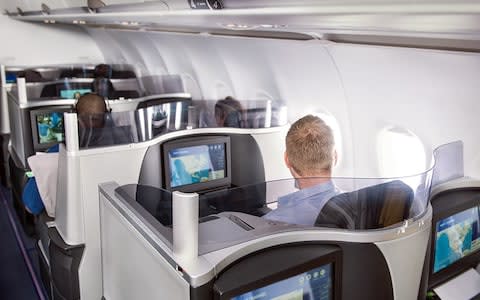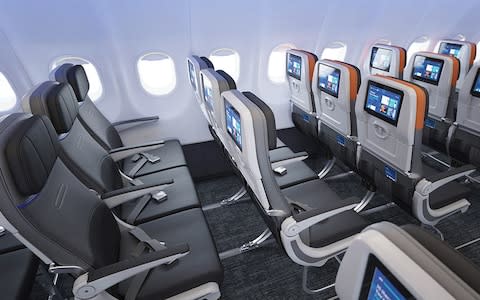Introducing JetBlue, the budget US airline that plans to fly to British shores

JetBlue will become the first US budget airline to enter the transatlantic fray with the launch of flights from both New York and Boston to London planned for 2021.
The carrier said the routes were currently “overpriced and underserved”, with JetBlue president Joanna Geraght adding: “London is the largest metro area JetBlue doesn't yet serve from both Boston and New York. The fares being charged today by airlines on these routes, specifically on the premium end, are enough to make you blush.”
In less than 20 years the airline has grown an extensive route network across North, Central and South America, with a comparable offering to the likes of Ryanair and EasyJet – fares do not include checked baggage or the ability to amend bookings free of charge. It does, however, unlike its budget brethren, offer free snacks and soft drinks to customers, while economy seats boast healthy leg room and entertainment screens.
Unlike British low-cost airlines, JetBlue also offer a business cabin on some of its planes, called “Mint”, with lie-flat beds. This year, the Mint cabin was named Best Regional Business Class in North America by TripAdvisor. but even
UK-born chief executive Robin Hayes - formerly of British Airways - said in September that last-minute business fares of up to $10,000 between New York and London were “obscene”, adding: “When we see that, we know we can go into it for a lot cheaper.”

The airline will operate the new transatlantic flights using the Airbus A321LR, a long-range version of the Airbus A321neo that is more fuel efficient than its predecessors and can carry up to 206 passengers.
Hayes has previously stated that Heathrow would be the target airport in London, but competition for slots is high, as is their cost.
What can passengers expect from JetBlue?
As mentioned above, the airline offers an economy service with perks - such as free food and drink - that budget travellers in the UK will be unfamiliar with.
In targeting premium travellers, JetBlue will be going head-to-head not only with the likes of British Airways and Virgin Atlantic, but also low-cost, long-haul rival, Norwegian, which also offers a premium economy.
JetBlue’s Mint cabin is a step ahead of Norwegian’s premium cabin, however, offering lie-flat beds in closed suites as opposed to recliner seats with only 46 inches of pitch.
In economy, the spacing is generous, with “coach” seats offering 34 inches of pitch and 18 inches of width, compared to Norwegian’s economy of 31-32 inches of pitch and 17.2 inches of width. EasyJet, which operates the A320 - the smaller version of the A321 - offers 29 inches of pitch and 18 of width. JetBlue also has free Wi-Fi on its flights.

Will they make a success of it?
There’s the rub. Last year was a tough one for airlines flying low-cost across the Atlantic, with Primera and WOW failing, and Norwegian wobbling.
Hayes has said it would not be a race to the bottom in terms of fares and that JetBlue would focus on “premium fares”, adding that he admired Norwegian: “People said it could not be done, I think they are really a pioneer.
“The transatlantic market comes down to three large carriers with huge amounts of power,” he said. “We have to move intelligently and stealthily to make sure we’re successful.”
Such a focus will mean going toe-to-toe with the likes of BA and Virgin, as well as well-established US carriers, while fares in economy will also have to be competitive to ensure full planes to make up for the space lost by the more expensive seats.
Simply put, low-cost airlines have to deal with the same costs - fuel prices, expensive aircraft, maintenance, airport fees - as the legacy carriers, but they have to keep fares cheap.
“It’s a hit with customers but profits are elusive,” explains aviation consultant John Strickland. “The model is based on the premise of low fares, which may be fine at peak times on any given market, but in periods of seasonally weak demand and when fuel prices are high, it spells disaster for profitability.”
He adds: “There’s a need to secure feed traffic to top up loads at quiet times but this adds cost and complexity and can be difficult to achieve.” This is far easier for legacy airlines with their powerful connecting networks.
The likes of BA can also boost revenue with their airport lounges, established loyalty programmes and business class cabins, which avoid reliance on only selling the lowest fares. Norwegian offers premium economy seating on its 787 Dreamliners, but this itself presents a conundrum. Can enough of these seats be sold to justify the space sacrificed?

